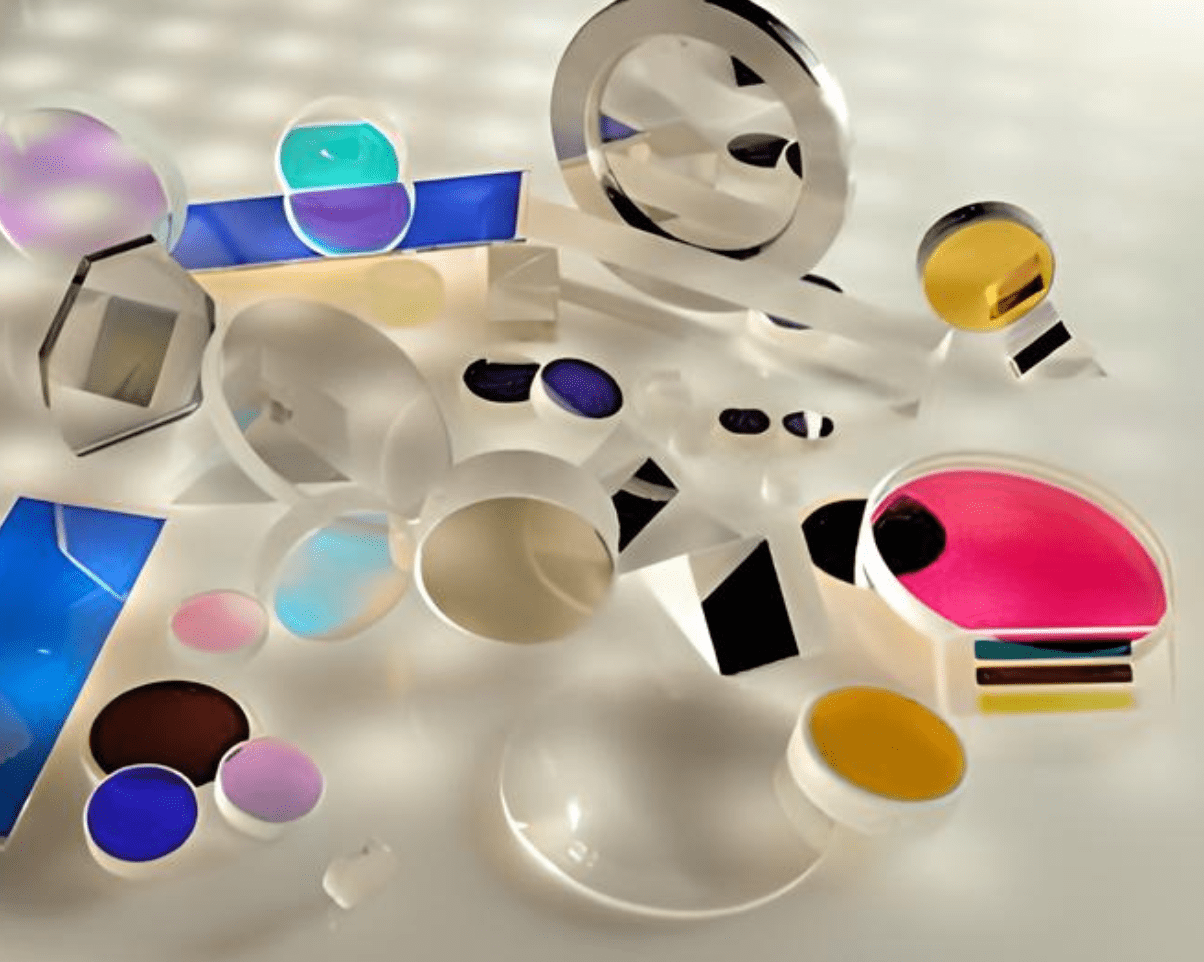
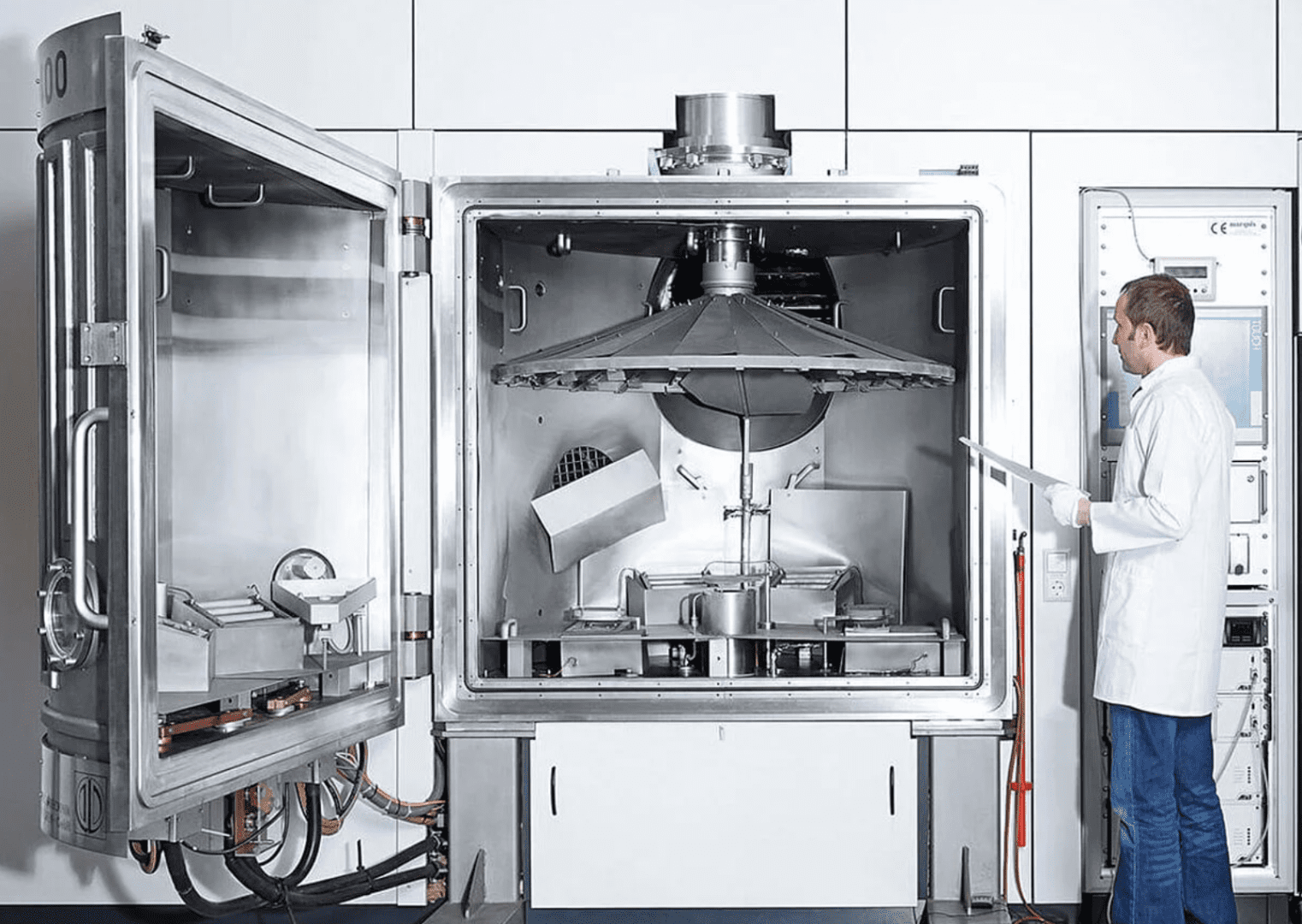
Optical Coating Technologies
Optical thin-film coatings can be deposited using various methods, each impacting their performance characteristics significantly.
Traditionally, methods like thermal and electron-beam (e-beam) evaporation, including ion-assisted e-beam evaporation (IAD), have been widely used for multilayer coatings required in high-performance mirrors and filters.
These methods, however, often result in "soft" coatings due to their inherent porosity, leading to durability issues, moisture absorption, wavelength shifts with temperature changes, and noticeable scattering.
In contrast, Notch Optics employs a sputtering deposition process for all its optical filters, which offers distinct advantages. Originally developed for magnetic disk drive heads and later adapted for optical applications, sputtering produces hard refractory oxide thin films that match the hardness of glass substrates.
This method ensures stable and reproducible deposition of hundreds of low-loss, reliable thin-film layers with high precision in optical thickness.
Ion-assisted Ion-beam Sputtering (IAD) enhances the sputtering process further by improving film density and reducing moisture absorption, temperature sensitivity, and scattering.
This results in very dense, low-scattering films ideal for demanding optical applications. Surface morphology studies using atomic force microscopy highlight the superior packing density of sputtered films compared to evaporated counterparts, maintaining substrate-level smoothness.
Historically, sputtering faced throughput limitations, particularly for larger filters needed in high-volume production. Notch Optics has overcome this challenge by developing advanced process technologies that enhance deposition rates and uniformity without compromising optical performance.
Their proprietary "optical monitoring" system ensures precise control over film thickness and spectral features, making sputtering a viable option for complex optical filters on a large scale.
Notch Optics continues to innovate in sputtering technology, improving efficiency and expanding capabilities, thereby maintaining its reputation for producing high-performance optical coatings suited for a wide range of applications in optics and photonics.
Advanced Coating Machines
Notch Optics has independently developed a variety of advanced coating machines with a commitment to quality and cost-effective solutions.
Coating Technology:
- Ion-Beam Sputtering (IBS)
- Ion Beam Assisted Deposition (IAD)
- Magnetron Sputtering (MS)
- Electron Beam Evaporation (E-Beam)
Wavelength Range: 300nm ~ 3000nm
Substrate: Optical Glass, Optical Fiber, Crystal, Sapphire
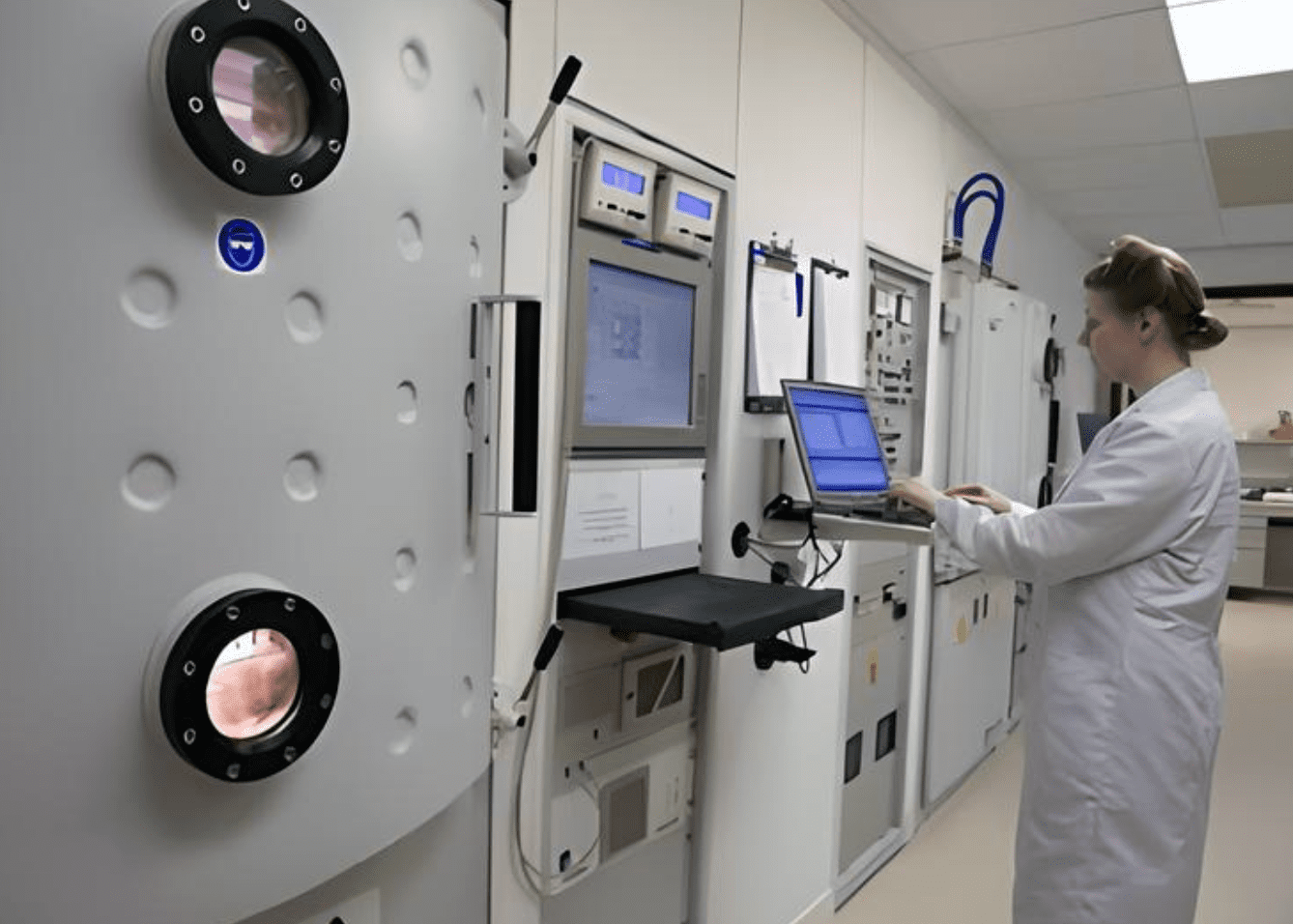
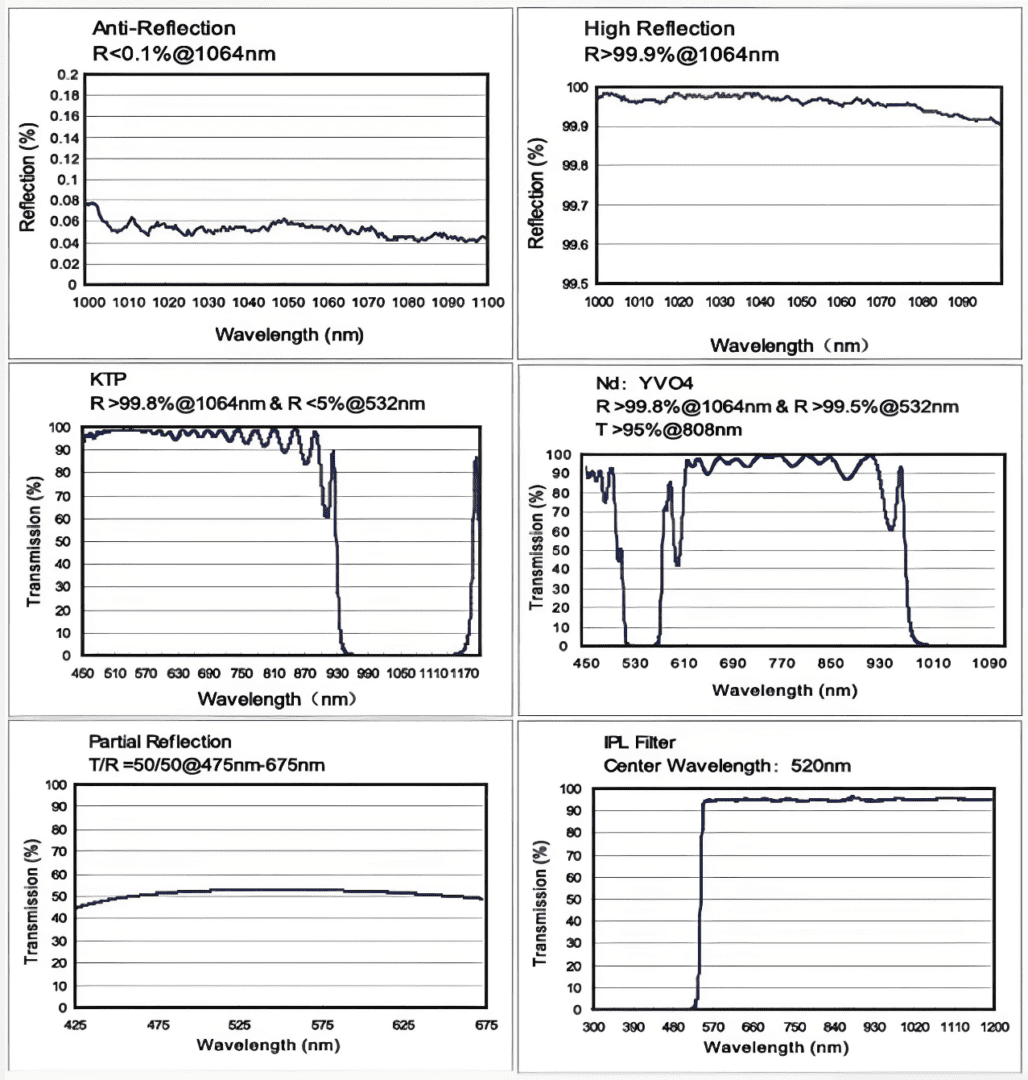
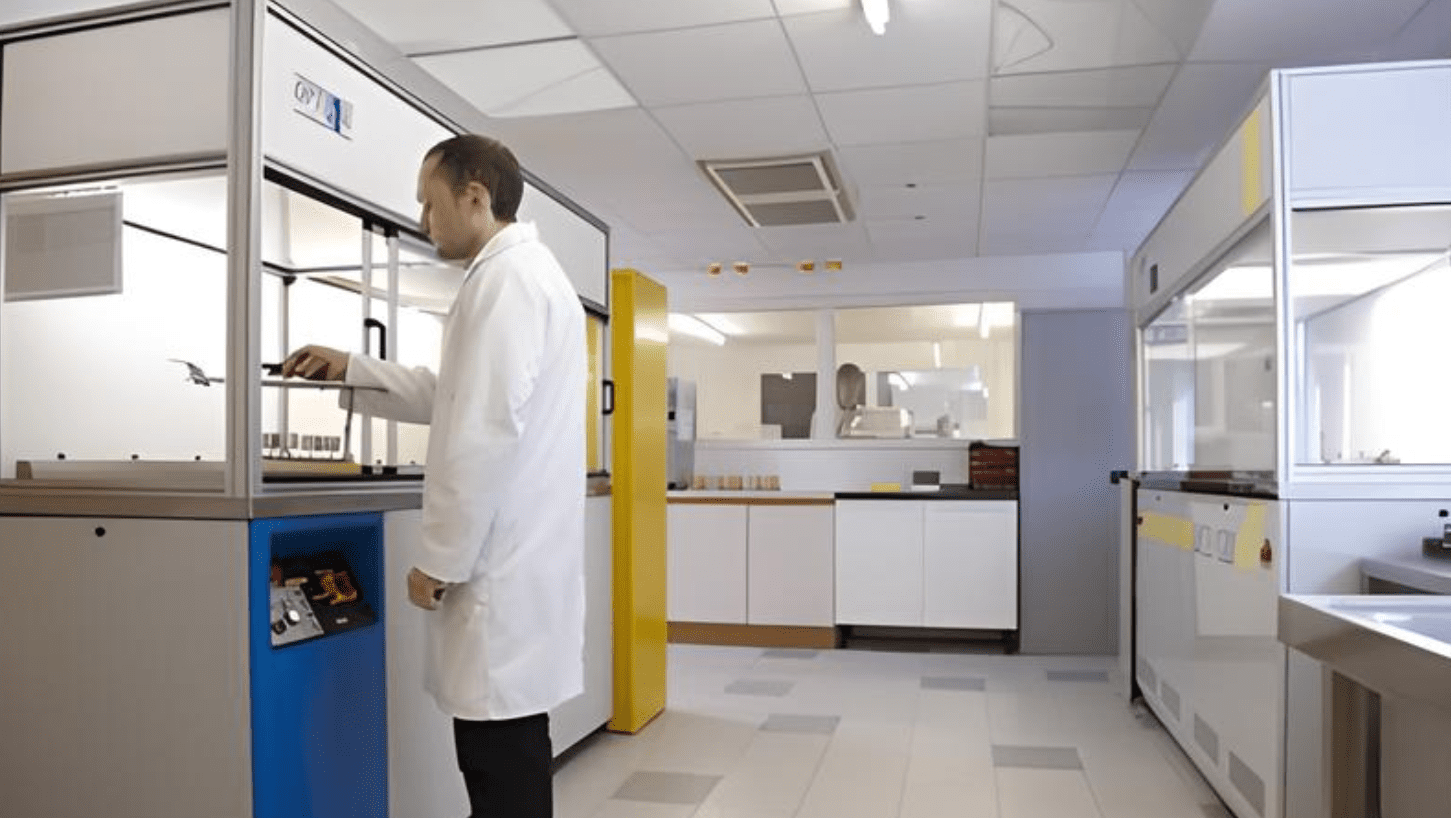
Custom Optical Coating Service
Thin Film Coatings
We offer a broad selection of high-performance optical coatings applied to customer-supplied or SLS-sourced substrates.
Choose from our range of standard OEM components, or request a custom-designed coating tailored to your specifications.
Our coatings are recognized for their exceptional laser damage resistance. For example, our 1064nm anti-reflective (AR) coatings have achieved a laser damage threshold (LDT) of 70 J/cm² in 20ns, while our 193nm high reflectors meet an LDT of 1.5 J/cm² in 13ns.
Our optical coatings have been independently tested for laser damage threshold by:
- CLRC – Rutherford Appleton Laboratory
- Lawrence Livermore National Laboratory
- Spica Technologies Inc.
- Quantel USA
Technology Capabilities
- Coating Types: Anti-reflective, Reflective, High Reflective, Polarizers (single wavelength, dichroic, and broadband)
- Materials: Ultrahard oxides, durable fluorides, metallic, and low-stress coatings
- Maximum Substrate Diameter: 300mm
- Spectral Range: 193nm to 2000nm
- Cleaning: Automatic ultrasonic batch substrate cleaning or manual cleaning with high-purity solvent
- Coating Technology: Physical Vapor Deposition (PVD) using electron beam or thermal source, with Ion Assisted Deposition (IAD)
- Laser Damage Thresholds (independently tested):
- 70 J/cm² in 20ns (1064nm)
- 1.5 J/cm² in 13ns (193nm)
- Uniformity: 0.5% across a 100mm diameter
- Equipment: Perkin Elmer Lambda 900 and 1050 Spectrometers + URA for spectral measurements, Zygo GPI/XP interferometer for surface flatness testing before and after coating
- Surface Flatness: Up to λ/10 on laser optics after coating
Coating Materials
Ultrahard Oxide
Adheres to MIL-C-675C, MIL-M-13508C, and MIL-C-48497A standards for adhesion and moderate abrasion resistance. Provides the highest laser damage thresholds, particularly around 1064nm.Fluoride
Ideal for deep ultraviolet (DUV) applications.Sulphide/Fluoride
Soft, low-stress coatings, typically used for Fabry-Perot etalons.
